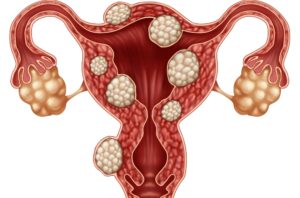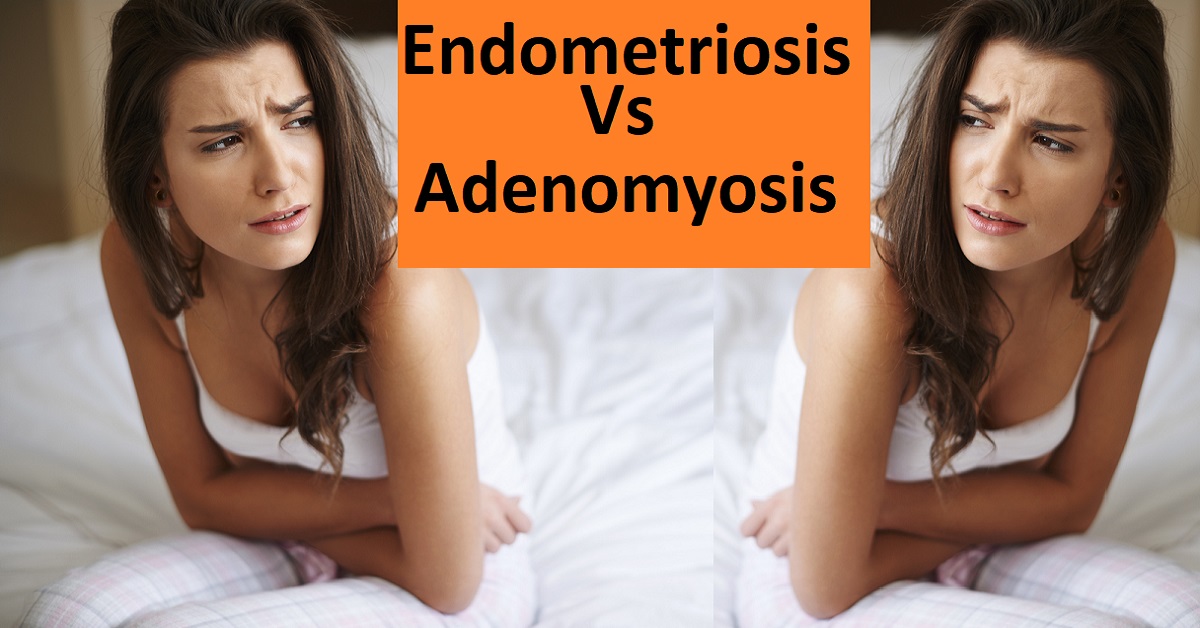One of the most delicate parts of a woman’s body it’s the uterus because it doesn’t only have a reproductive function but a lot of the system’s hormones are regulated there. That’s why it’s so important to know and identify any kind of disease or condition that might be affecting it so that the proper medical attention can be administered. Today we will talk about the endometrial cells and the two most common diseases that affect them: Endometriosis and Adenomyosis.
Endometriosis is a condition that causes endometrial cells to grow at an abnormal rate outside of the uterus and in delicate areas of the body like the fallopian tubes or the lymphatic system. Endometrial cells are sex hormones that are released from the uterus during menstruation.

Endometriosis presents itself in four stages, with its symptoms growing exponentially:
- Minimal: Small, shallow lesions and endometrial implants inside the ovaries. Mild pelvic inflammation.
- Mild: The lesions and endometrial implants keep growing; pelvic pain becomes constant.
- Moderate: The endometrial implants go deep inside and outside the ovaries and around the pelvic lining.
- Severe: The implants multiply in other parts of the body, most commonly the fallopian tubes and bowels.
Now let’s talk about Adenomyosis. While it also works with endometrial cells and an excess of these in the body, this abnormal growth occurs only inside of the uterus. This means the condition isolate itself I one part of the body, but this makes it not only hard to diagnose but also makes it difficult to distinguish from others.
The symptoms associated with Adenomyosis are these:
- A uniformly enlarged uterus
- Excessive menstrual bleeding (due to endometrial tissue interfering with the contraction of uterine muscles during menstruation)
- Pain, bleeding, and irritation of pelvic peritoneum.
Both of the conditions can be overlooked by doctors in their first stages. Endometriosis’s main symptom is the pelvic pain, and this is usually linked by specialists to muscle pain or traumas, even in younger women. Adenomyosis main symptom is irregular bleeding and menstruation which makes it more common for doctors to think about it before other conditions, but an ultrasound may help determine if it’s indeed Adenomyosis, a tumor, or just inflammation of the uterus.
Treatments
Endometriosis is commonly treated with pain medication, although hormonal therapy is also used. Medicines like Ibuprofen are prescribed unless it doesn’t have any effect on the patient and then stronger medications are used. Hormonal therapy helps regulate endometrial cells to reduce endometriosis’s growth. Surgeries are usually executed on women who want to get pregnant, but in the case in which the conditions have heavily spread a hysterectomy is recommended.

Adenomyosis treatments are wide and usually vary depending on the symptoms and stages of the condition, and it must be mentioned that it only has one complete cure for it: Complete removal of the ovaries. Here, we will explain which is the most used, and why:
- Anti-inflammatory medications, like ibuprofen, similar to the Endometriosis treatments. The prescribed doses must be taken two to three days before the start of the menstrual cycle and continue during the period. *
- Hormonal treatments include oral and progestin-only contraceptives to reverse increased estrogen levels that contribute to the symptoms.
- Endometrial ablation involves the removal of the endometrium and it’s an outpatient procedure with a short recovery time. Not recommended if the disease has invaded the muscle too deeply.
- Uterine artery embolization is a mildly invasive procedure that prevents arteries from supplying blood to the affected area in order to reduce its size and avoid scar formation in the uterus.
- Hysterectomy’s the only way to completely cure the condition and involves the complete surgical removal of the uterus. This is recommended only in the most severe cases and for women who don’t plan to have any more children.





